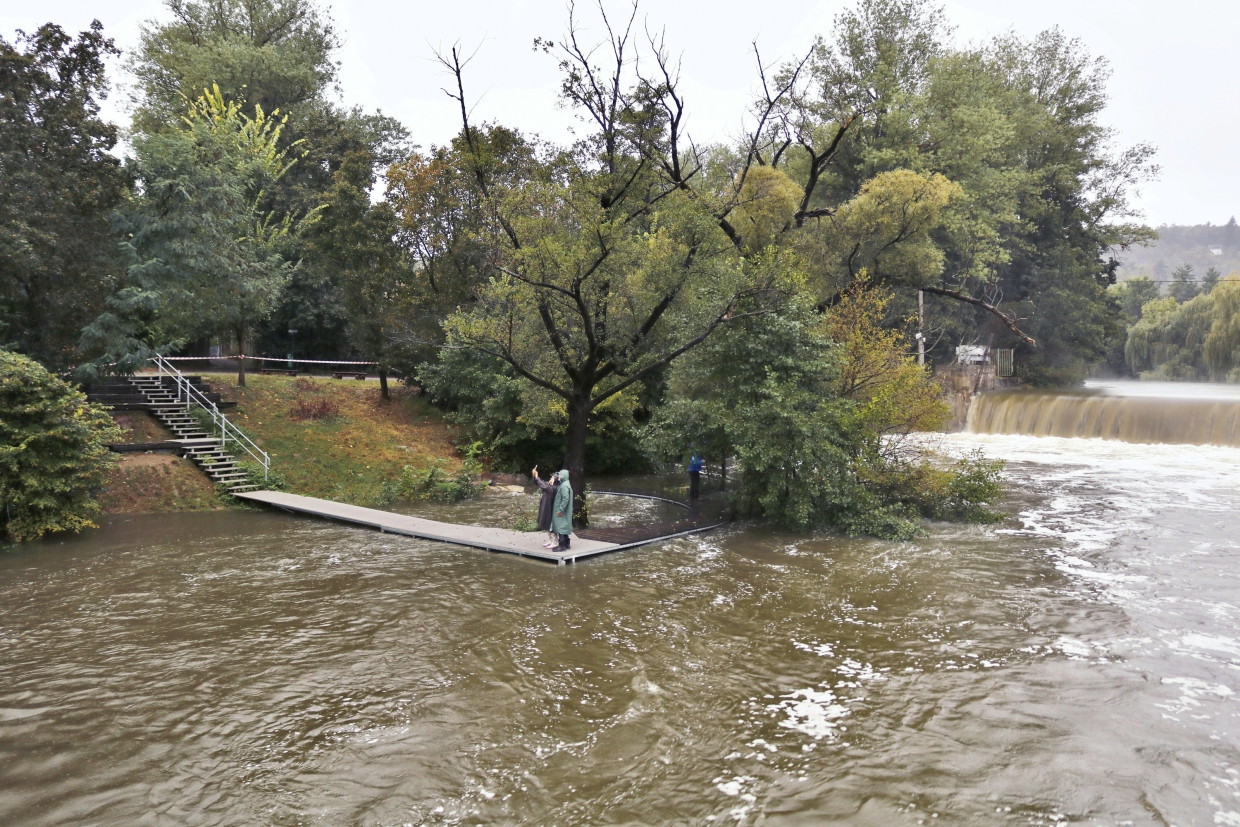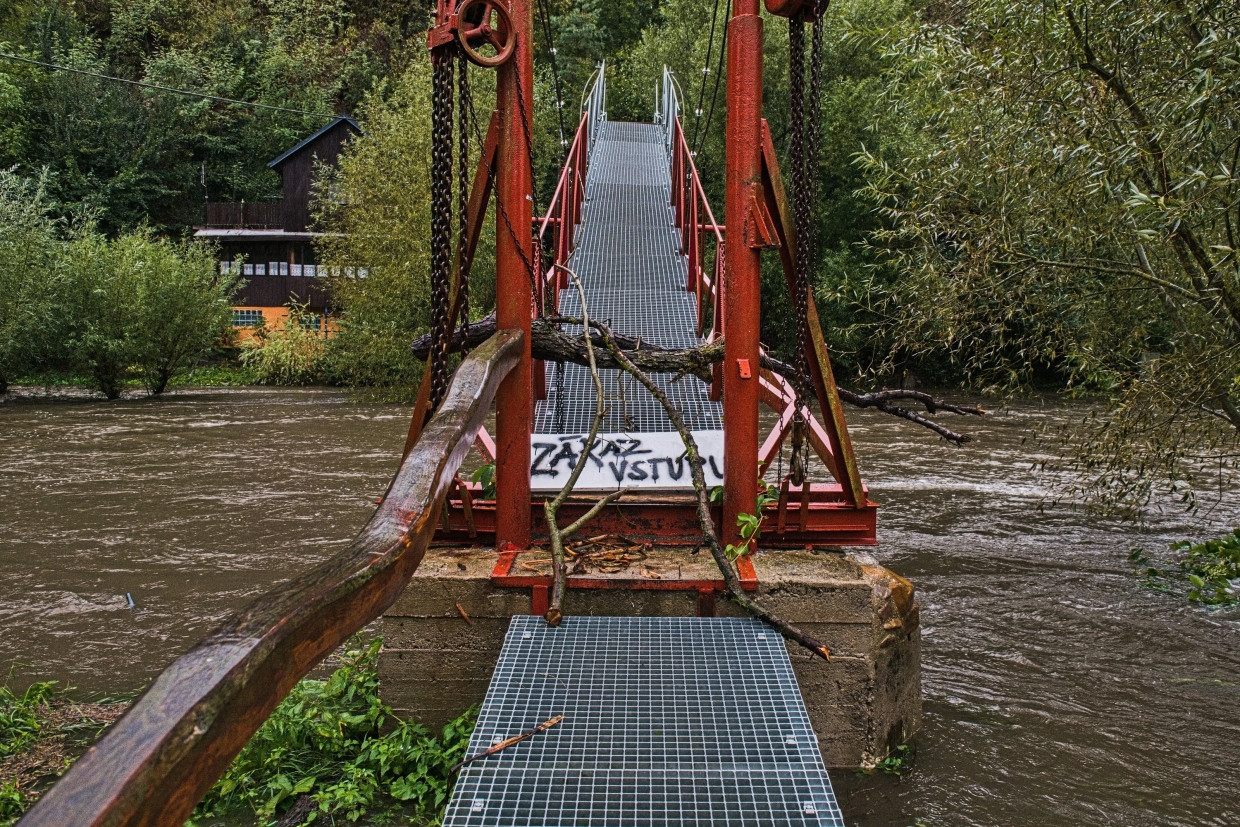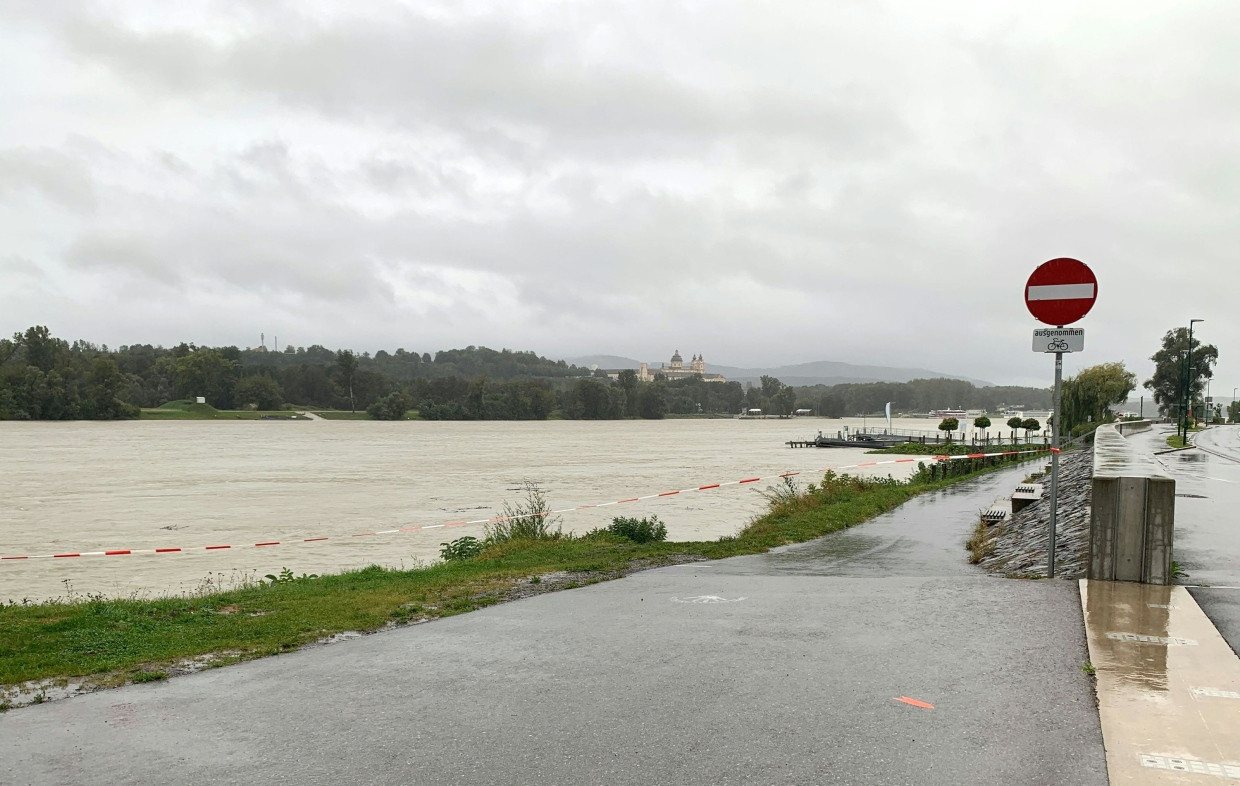In Deutschlands östlichen Nachbarländern Polen und der Tschechischen Republik ist es nach Dauerregen in der Nacht zu Überschwemmungen gekommen. Bereits am Freitag hatten sich Einsatzkräfte in den beiden Ländern sowie in Österreich und der Slowakei auf Unwetter vorbereitet. Mindestens vier Menschen sind nach Behördenangaben in Rumänien in Folge von Starkregen und Überschwemmungen ums Leben gekommen. Insgesamt 19 Dörfer in acht Landkreisen seien von Hochwasser betroffen, teilte der Katastrophenschutz des Landes am Samstag mit. In weniger als 24 Stunden fielen nach Angaben des Umweltministeriums in dem Gebiet mehr als 150 Liter Regen pro Quadratmeter. Auch in anderen Gegenden der Region bereiteten sich die Behörden auf Überschwemmungen vor, etwa in Ungarn, der Slowakei, Österreich sowie in Bayern und Sachsen.
Die heftigen Niederschläge östlich von Elbe und Spree lassen voraussichtlich auch die Wasserstände der Elbe anschwellen. Womöglich am Samstagabend wird am Pegel Schöna in Sachsen die Alarmstufe 1 erreicht, für Dresden wird damit am frühen Sonntagmorgen gerechnet, wie das sächsische Landeshochwasserzentrum in einer Warnmeldung informierte. Die höchsten Wasserstände an den sächsischen Elbepegeln werden derzeit ab Mittwoch und Donnerstag kommender Woche erwartet.
Deswegen drängt die Zeit bei den Abrissarbeiten am eingestürzten Teil der Dresdner Carolabrücke. „Die Zeit rennt uns weg“, sagte Feuerwehrsprecher Michael Klahre am Freitagabend. Eine Spezialfirma arbeite rund um die Uhr, um die Trümmerteile zu beseitigen. Geplant ist, mit Ausnahme des am frühen Mittwochmorgen in den Fluss gestürzten Abschnitts den gesamten Bereich des Brückenzuges C zu beräumen. So sollen Folgeschäden beim drohenden Hochwasser vermieden werden. Die Arbeiten sollen nach bisherigen Angaben bis Sonntagabend erledigt sein.
Für Sachsen meldete der Deutsche Wetterdienst (DWD) am frühen Samstagmorgen, dass der Dauerregen bis zum Samstagmittag voraussichtlich abklingt. Die Nacht zum Sonntag soll demnach weitgehend niederschlagsfrei bleiben. Am Sonntag setzt der Prognose zufolge dann wieder Regen ein.
Heftiger Regen im Einzugsgebiet von Elbe und Moldau
Ursache für das Anschwellen der Elbe sind den Angaben nach heftige Regenfälle im Einzugsgebiet von Elbe und Moldau in der Tschechischen Republik. In Deutschlands Nachbarland wurde an rund 20 Flüssen und Bächen die dritte Hochwasser-Alarmstufe „Gefährdung“ ausgerufen, wie die Nachrichtenagentur CTK meldete.

Due to severe weather, more than 60,000 households in the Czech Republic are without electricity. This was reported by the CTK agency, citing energy suppliers. The administrative region around Usti nad Labem (Aussig an der Elbe) in the northwest of the country on the border with Saxony was the most affected. There alone, more than 20,000 households were temporarily without electricity. The reason given was that trees fell on the overhead power lines due to the wet ground and strong wind.
Elsewhere, sudden heavy rain caused flooding. Czech television published footage on X from the village of Mikulovice near the border with Poland. There, you can see how the masses of water flooded houses, garages and streets early in the morning. “The water flowed down into the village from the surrounding fields,” it said. The fire brigade offered residents the opportunity to seek safety in the local gymnasium. So far, however, no one has taken advantage of this.
In the eastern administrative region of Moravia-Silesia, authorities estimate that hundreds, if not thousands, of people will have to be brought to safety from their homes. There and in the region around Olomouc, a state of emergency was declared on Saturday. Even small streams turned into raging torrents. In some places, people had to be brought to safety in boats. Pictures showed flooded streets with floating cars. The army was ready to help.
A clinic also had to be evacuated due to the flooding. More than 180 patients from the Hospital of the Brothers of Mercy in Brno were to be gradually transferred to other facilities, the clinic's management announced.
In the southern Bohemian town of Budweis (Ceske Budejovice), firefighters have been erecting flood protection walls since Friday evening. They loaded sandbags onto the Maltsch River and erected a prefabricated barrier on the banks of the Vltava. According to meteorologists, the water levels of the rivers in the Czech Republic will continue to rise over the weekend. In some places, 50 to 110 litres of rain per square metre has already fallen since Friday.

Two villages in Poland evacuated
In Poland, Krakow, the country's second-largest city, is battling flooding after heavy rainfall. Citizens who want to protect their buildings themselves can pick up sandbags at 28 locations in the city, the city administration wrote on X. Public transport in the southern Polish metropolis with around 800,000 inhabitants was temporarily disrupted on Saturday after several underpasses in the center filled with water. Trams and buses had to be temporarily diverted. In the afternoon, the city administration reported that the problems had been resolved.
The situation is also serious in southwest Poland. In the Opole region, the Biala Glucholaska river overflowed its banks. 400 residents had to be brought to safety from the village of Glucholazy near the border with the Czech Republic. Interior Minister Tomasz Simoniak was on site and posted pictures of the work of the rescue workers on X.
One hundred firefighters and 60 police officers were deployed in the village, wrote Simoniak. Some residents also had to be evacuated from the village of Morow because the river Mora had overflowed its banks. In total, the fire department carried out 400 operations in the region.
The Meteorological Institute expects continued rainfall. The alarm level has already been exceeded at 35 water measuring stations, the institute reported on X.
Snow line in the Alps is falling
For Germany, the German Weather Service predicted heavy, continuous rain in the Alps and the eastern low mountain ranges. In the Alps above 1,200 meters, the precipitation will come down as snow. At altitudes above 2,000 meters, around one meter of new snow is possible. That is “somewhat unusual” for this time of year, said a DWD spokesman. At night, the snow line could drop to around 1,000 meters.
The fact that there will be snow instead of rain at higher altitudes will have a “flood-dampening effect” from the perspective of the flood intelligence service. Nevertheless, increased water levels are to be expected in southeast Bavaria – from the Isar catchment area to Berchtesgadener Land and the Bavarian Forest.

Austria expects 300 litres of rain in some areas
In Austria, emergency services have declared more than a dozen municipalities disaster areas due to the persistent heavy rainfall. In the Waldviertel region, around 120 kilometers northwest of Vienna, flooding is expected that, on average, only occurs once every 100 years.
“The coming hours will be the hour of truth for flood protection and a massive test of endurance for our emergency services and many of our fellow countrymen,” warned the governor (prime minister) of Lower Austria, Johanna Mikl-Leitner. “Especially in the Waldviertel, we expect challenges of historic proportions.”
In Austria, weather experts are expecting massive amounts of rain with flooding and landslides in the coming days. According to the state meteorological institute Geosphere Austria, more than 300 liters of rain per square meter could fall in parts of Lower Austria and Upper Austria by Tuesday.
Emergency services are preparing for flooding along the Danube in Austria, which occurs approximately every 10 to 15 years. Among other things, mobile flood protection systems have been set up and sandbags have been filled.









